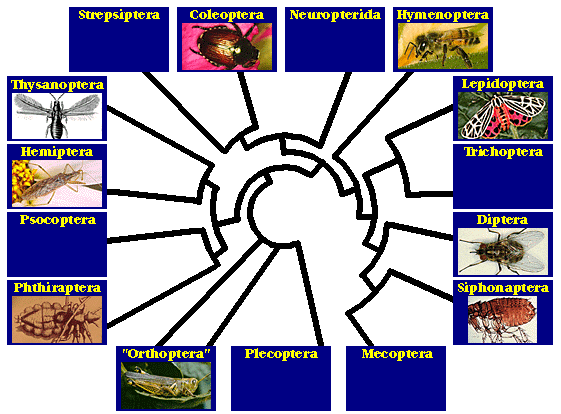



Uniramia: Systematics, Part 2
The Neoptera






The Neoptera contains most of the diversity of the insects -- that is to say, most of the diversity of the animals on this planet. Three of the groups shown on this page, the Coleoptera (beetles), Lepidoptera (butterflies and moths), and Hymenoptera (ants, bees, and wasps), together account for about half of all known animal species -- and new species of these and other insect groups are being discovered almost every day.
Don't be put off by the long Latin names on this cladogram. Most of them refer to very familiar groups of insects:
Drawings and information about a wide range of uniramians, mostly insects, are available from the University of Illinois Department of Entomology. We have used some of them in this exhibit; our thanks to David Lampe for making them available to us. We also recommend the University of Delaware Insect Database or the Insects Home Page at Exeter University in England, for excellent brief synopses of the major insect orders.
Also, check out the Neoptera pages of the Neoptera pages on the Tree of Life at the University of Arizona.

Carpenter, F. M. 1992. Treatise on Invertebrate Paleontology. Part R. Arthropoda 4, Volume 3: Superclass Hexapoda. Geological Society of America and University of Kansas, Boulder, Colorado and Lawrence, Kansas.

